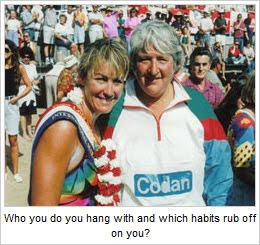Hopefully you are having a well earned rest over the Christmas holiday and are now thinking about what training you should be doing over the next few months. This is a great time to take stock of your swimming and make some training plans to meet your goals this summer. But when it comes to assessing your stroke technique, without the help of a good coach it’s hard to judge what you should be working on.
Enter the Stroke Contrast method. This technique asks you to deliberately alter your stroke for the worse so that you can experience how it feels. The contrast this creates gives you a unique sensory experience, which helps you tune into flaws in your stroke.
The possibilities for creating Stroke Contrasts are endless. Here’s a classic session -- try it for yourself and see what you experience:
| STROKE CONTRASTS TEST SESSION |
| Warm up: 400m smooth easy freestyle For each of the contrasts below, swim 100m deliberately emphasising the stroke error then 200m focusing on correcting that error: |
 a) Swim 100m without any exhalation into the water – holding you breathe the whole time you are face down. Rotate to the side as normal to breathe but in that short window both exhale and inhale. b) Now experience the contrast by swimming 200m emphasising good strong exhalation into the water. Doing this you only have to inhale when you rotate to breathe. This is good breathing technique – do you do this in your stroke normally? Find out more about exhalation. |
 a) Swim 100m without any body roll, trying to keep your shoulders and hips flat and level with the water. To do this you might have to swing your arms round the side a bit more than normal. b) Now swim 200m emphasising good body roll, rotating the hips and shoulders together. As you enter the water and extend forwards at the front of your stroke really emphasise rolling your body onto that side. Find out more about body roll. |
 a) Using a pull buoy, swim 100m flexing your foot square to your leg as if you are standing. When you swim in this position your toes will point down towards the bottom of the pool. Feel what this does to your body position and how it creates drag. b) Now continue with the pull buoy for 200m correcting this stroke flaw by pointing your toes (technical term: plantar flexion). Experience how this feels and what it does to your progress through the water. Find out more about kicking. |
 a) Swim 100m, every 25m try a different head position: 1) looking straight down and slightly behind 2) looking straight down 3) looking straight down and slightly ahead 4) looking ahead (eyes still just below the surface) b) There is no right or wrong with head position – it’s an individual thing to suit your stroke. Choose the position that felt best for your stroke and then swim 200m holding that position. |
 a) After entering the water at the front of your stroke and extending forwards, start your stroke but deliberately keep your arm straight without any elbow bend. This means you have to push straight down on the water rather than push it back. Emphasise this stroke flaw for 100m. b) Now swim 200m, focusing on extending forwards and then commencing the stroke by catching the water with a good elbow bend, so pulling the water back to the wall behind you. Quick tip: try exaggerating the elbow bend more than you might think necessary. Find out more about the catch and pull. |
| Warm down: Pick the contrast above that made the most difference to your stroke and swim 200m at a very easy pace focusing on that one thing. |
That’s a simple 2100m technique session which anyone can use to assess their own stroke. You can modify it and add in other stroke flaws e.g. bent knee kicking, late breathing and catch up stroke timing.
Important: Deliberately introducing a stroke flaw in this way increases your perception. You can often feel if you have a tendency towards that particular flaw in your stroke. But if you don’t feel any difference at all versus your normal swimming, that shows you have the full version of that flaw in your stroke. Make fixing it your immediate priority!
How to fix a stroke flaw? The very best way is to invest in our full Stroke Correction DVD Boxset. It contains the most effective methods available to correct your stroke and meet your swimming and triathlon goals.
Merry Christmas!
Swim Smooth
Discuss this post and let us know your experiences on our forum here.





































